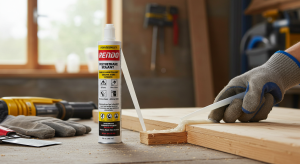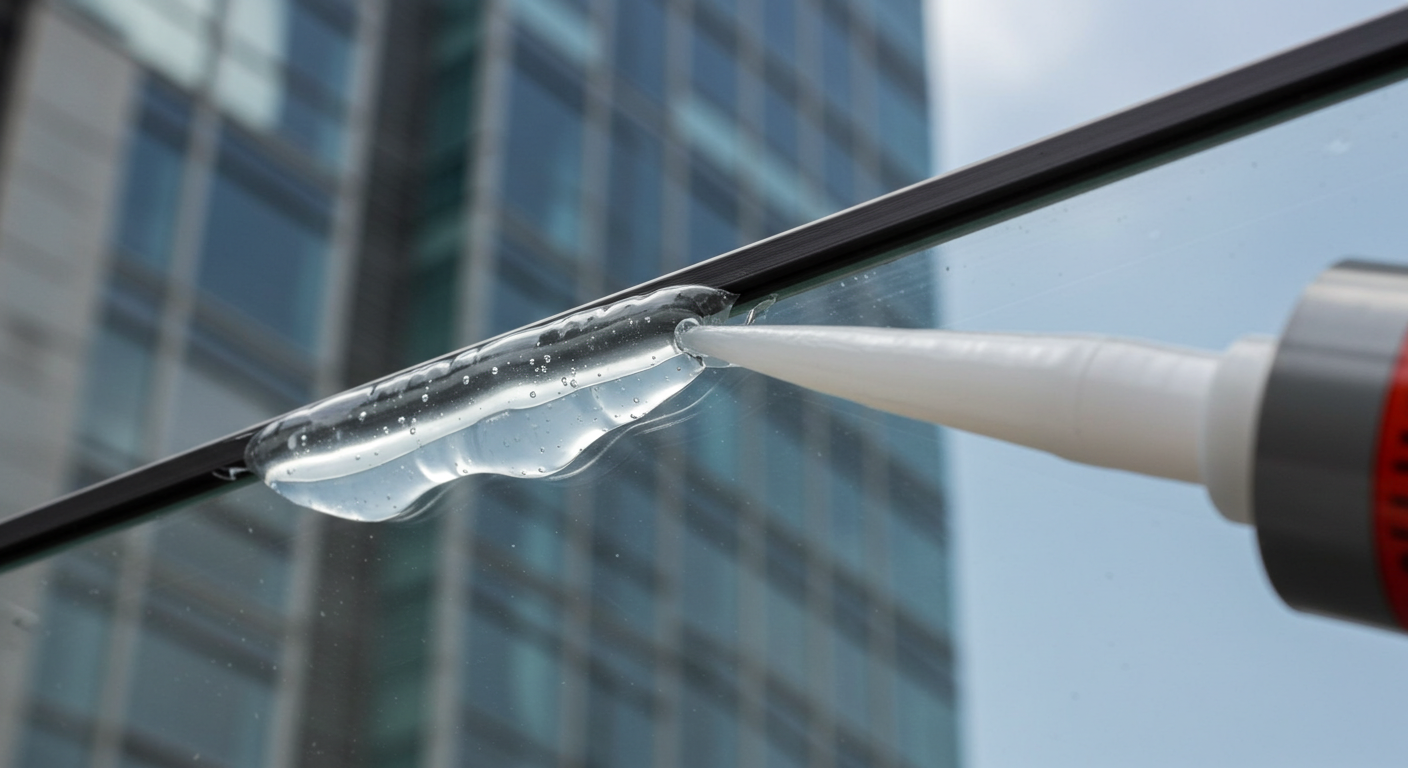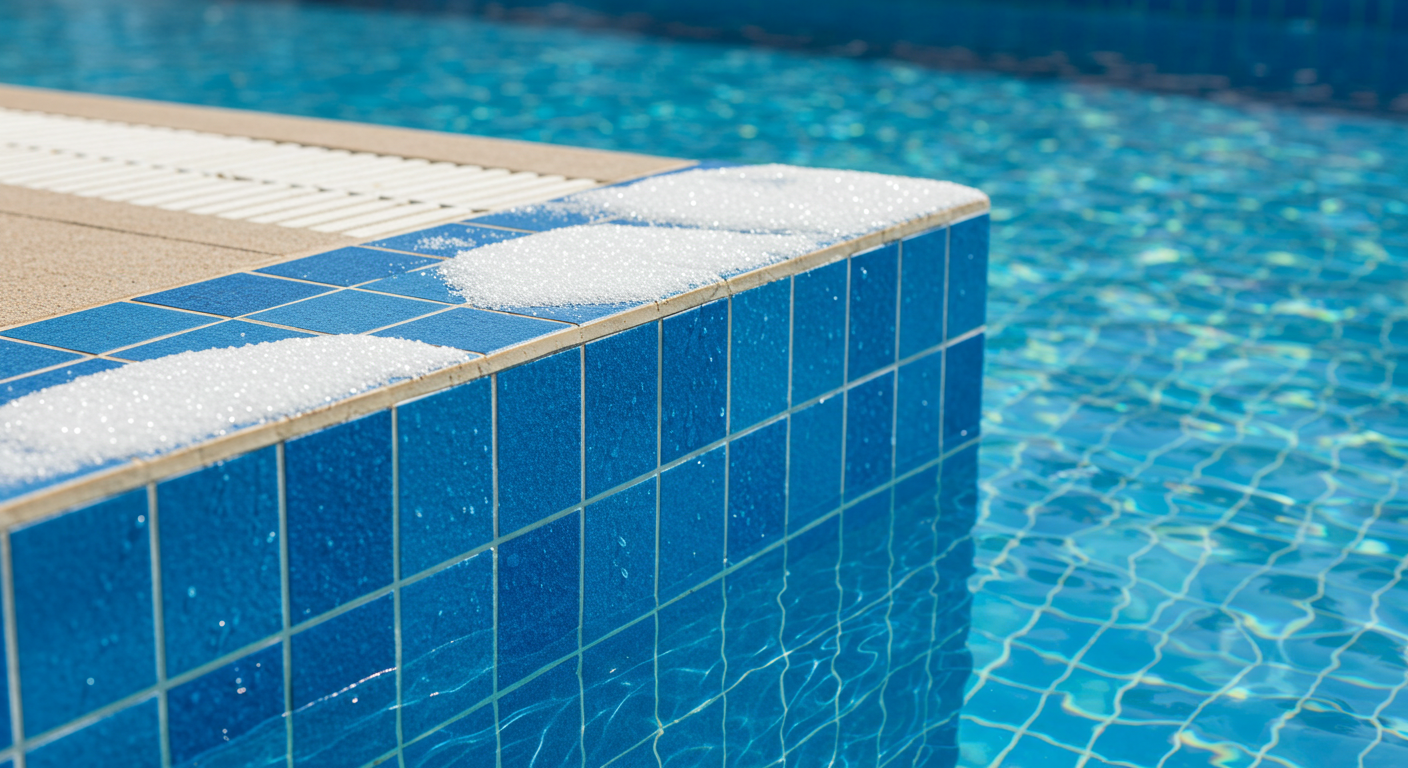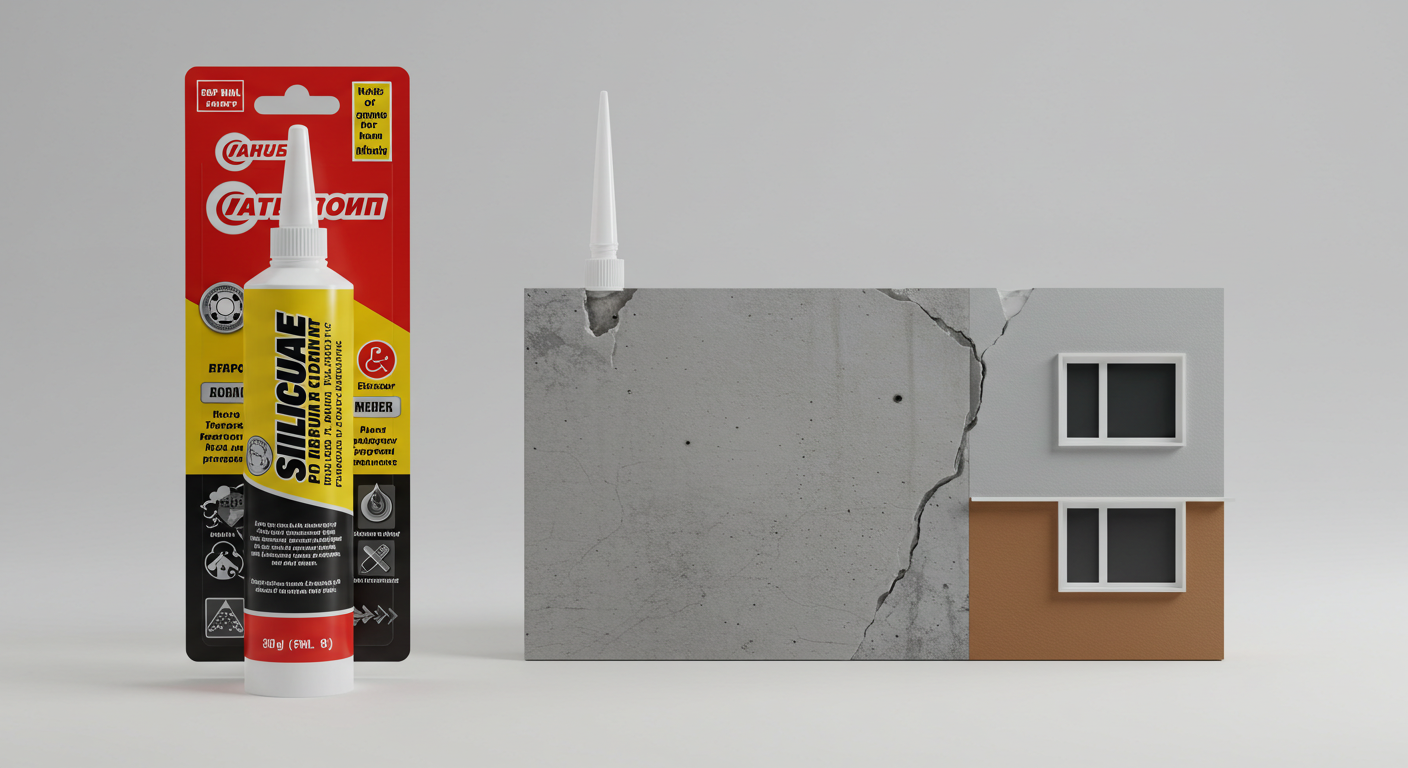Durable Polyurethane Sealant for Joints: The Key to Long-Lasting Construction Success
2025-02-01

Introduction: The Unsung Hero of Construction
When it comes to sealing joints, we often take the materials that hold our structures together for granted. But think about this: every bridge, sidewalk, or building you’ve ever encountered relies on effective sealants to keep moisture, air, and debris at bay. Among the many options, polyurethane sealants have earned their reputation as a go-to choice for professionals in construction, automotive, and industrial applications. But what makes them stand out, and why are they particularly durable?
In this post, we’ll break down everything you need to know about polyurethane sealants for joints—their benefits, how they compare to other materials, and why they’re so trusted in demanding environments. Whether you’re a contractor or a curious DIYer, you’ll leave this guide with valuable insights into choosing the right sealant for your project.
What Exactly Is a Polyurethane Sealant?
Before diving into why polyurethane is so effective, let’s start with the basics. Polyurethane sealants are a type of elastomeric material that forms a flexible, durable bond when applied to joints. These sealants cure through moisture exposure, making them ideal for both indoor and outdoor applications. They’re known for their ability to bond to a wide range of surfaces—concrete, metal, wood, and plastics—with minimal preparation.
Key Features:
- Flexibility under temperature changes
- High adhesion to diverse materials
- Resistance to moisture, chemicals, and abrasion
- Long-lasting durability even in high-traffic areas
In short, they’re designed to take a beating and still perform.
Polyurethane sealants are especially favored in environments where other materials might fail, such as coastal areas with salt-laden air or industrial sites exposed to chemicals and heavy machinery. Their ability to maintain elasticity and adhesion, even when subjected to stress and environmental factors, makes them a critical component of durable construction projects.
Whether you’re dealing with the constant movement of expansion joints, the vibrations of heavy machinery, or the corrosive effects of saltwater in marine environments, polyurethane sealants deliver unparalleled performance.
Why Durability Is the Name of the Game
In any construction or repair project, the longevity of materials can determine the success of the build. When it comes to joints, failure to properly seal them can lead to water infiltration, structural damage, and costly repairs down the line. Durable polyurethane sealants excel in several areas that directly contribute to their longevity:
- Elastic Recovery: They can stretch and return to their original form, accommodating expansion and contraction without cracking. This feature is particularly important in regions with significant seasonal temperature variations, where materials constantly expand and contract.
- Adhesion Strength: Their ability to bond with different substrates means fewer failures due to detachment. They can form a robust seal on porous and non-porous surfaces, providing unmatched security against leaks. Their compatibility with materials like glass, wood, and steel enhances their versatility.
- Weather Resistance: Polyurethane sealants are UV-resistant, ensuring they don’t degrade under prolonged sun exposure. Combined with resistance to rain, snow, and wind, they provide all-season protection for joints.
Additionally, their resistance to extreme temperatures means they can perform effectively in both freezing winters and scorching summers without losing flexibility or adhesion. Many structures like bridges and highways rely on this durability to maintain long-term integrity, even in regions prone to extreme weather.
Comparison Table: Polyurethane vs. Silicone vs. Acrylic Sealants
Choosing the right sealant often means weighing it against alternatives. Here’s a quick comparison of polyurethane, silicone, and acrylic sealants:
| Feature | Polyurethane Sealant | Silicone Sealant | Acrylic Sealant |
|---|---|---|---|
| Flexibility | High | Very High | Moderate |
| Adhesion Strength | Excellent | Good | Moderate |
| Durability | Long-lasting | Long-lasting (with UV protection) | Short to medium lifespan |
| Curing Time | Moderate (24-48 hours) | Fast (typically within 24 hours) | Fast |
| UV Resistance | Good | Excellent | Poor |
| Surface Compatibility | Wide range (concrete, metal, wood) | Limited in certain cases | Best on porous surfaces |
| Cost | Moderate | Higher | Low |
Key Takeaway:
- Choose polyurethane sealants for heavy-duty projects where flexibility, adhesion, and longevity are critical.
- Silicone sealants may be ideal for waterproofing or areas with high UV exposure.
- Acrylic sealants work well for interior, non-structural applications but may fall short in demanding environments.
Polyurethane sealants strike a balance between cost-effectiveness and durability, making them a preferred choice for long-term applications. Unlike acrylics, which may crack or wear down over time, and silicones, which can be expensive and less adhesive to some materials, polyurethanes offer comprehensive protection in diverse conditions.
Where Polyurethane Sealants Shine: Applications and Use Cases
So, when should you use a polyurethane sealant? Here are some common scenarios where their durability and flexibility provide significant advantages:
1. Construction and Expansion Joints
Think of roads, bridges, and concrete structures that expand and contract with temperature changes. Polyurethane’s flexibility ensures the joint can handle this movement without cracking or separating. It is also common to see polyurethane sealants used in parking garages, airports, and stadiums due to their ability to withstand heavy loads and constant use.
Example: Highways and bridges experience regular expansion due to weather fluctuations. Without a flexible sealant like polyurethane, joints would crack, allowing moisture to penetrate and weaken the structure.
2. Roofing and Waterproofing
Roofing systems rely on sealants that can withstand exposure to rain, wind, and sun. Polyurethane sealants create a watertight barrier, preventing leaks and structural damage. Their resistance to standing water makes them suitable for flat roofing systems, gutters, and drainage channels.
Why it works: Polyurethane’s high adhesion allows it to stick firmly to a range of surfaces commonly found in roofing, including metal flashing, tiles, and concrete.
3. Automotive Applications
In the automotive industry, polyurethane sealants are used for windshield bonding and sealing body panels. Their high adhesion strength ensures that parts stay securely in place, even under vibrations and impact. They also provide noise-dampening properties, contributing to a quieter cabin experience.
Additional benefits: Many car manufacturers rely on polyurethane’s flexibility to absorb shocks and vibrations, ensuring passenger safety and comfort.
4. Flooring and Industrial Surfaces
Industrial floors, particularly in warehouses and factories, face heavy foot and vehicle traffic. Polyurethane sealants can fill cracks and joints without degrading over time. Their chemical resistance also makes them ideal for areas exposed to oil spills, solvents, and industrial byproducts.
Case study: A manufacturing plant with frequent forklift traffic successfully extended the life of its flooring by sealing joints with polyurethane, reducing maintenance costs.
5. Marine and Offshore Applications
Polyurethane sealants are used in shipbuilding and offshore structures due to their water resistance and durability. They can handle the harsh marine environment, where saltwater, wind, and constant moisture are present.
Marine performance: Their ability to resist salt corrosion makes them indispensable for sealing hulls, decks, and underwater components.
Benefits of Polyurethane Sealants Over Time
1. Resilience to Harsh Environments
Durable polyurethane sealants are designed to handle extreme conditions, from subzero temperatures to blistering heat. They resist water, salt, chemicals, and even oils, making them suitable for marine and industrial environments. Their resilience ensures that once applied, they require minimal maintenance.
Real-world example: Offshore oil rigs rely on polyurethane to seal joints exposed to saltwater and high-pressure conditions, where failure could result in costly downtime.
2. Long-Term Cost Savings
While polyurethane sealants may have a slightly higher upfront cost than some alternatives, their long-lasting performance can reduce maintenance expenses and extend the lifespan of the structures they protect. In many cases, investing in a high-quality sealant prevents costly repairs and replacements.
Financial insight: Contractors often choose polyurethane to avoid the frequent reapplications associated with cheaper alternatives, making them more cost-effective over the project lifecycle.
3. Ease of Application
Many polyurethane sealants are easy to apply with a standard caulking gun. Their thixotropic nature prevents sagging, even on vertical surfaces. They flow smoothly during application, making it easy to fill joints and gaps effectively.
Pro Tip: Always ensure surfaces are clean and free of debris before application to achieve the best adhesion. For large-scale applications, consider using a primer for enhanced bonding.
4. Noise Reduction
Polyurethane sealants also offer soundproofing benefits, which is why they’re used in applications like window installation and automotive assembly. By dampening vibrations, they can reduce unwanted noise and improve overall comfort.
Common Myths About Polyurethane Sealants
Myth 1: “They’re too rigid for certain applications.”
Reality: While polyurethane is known for its strength, its elastic properties make it flexible enough to handle significant joint movement. Even in applications where flexibility is critical, polyurethane can perform without cracking or splitting.
Myth 2: “They degrade quickly when exposed to sunlight.”
Reality: While earlier formulations of polyurethane were prone to UV degradation, modern versions are enhanced with UV-resistant additives. This improvement has made them more reliable for outdoor applications.
Myth 3: “They’re difficult to remove.”
Reality: Polyurethane sealants can be removed, but proper tools and solvents are necessary. This “difficulty” is a testament to their strong adhesion—a benefit when long-term performance is desired.
Key Considerations Before Using Polyurethane Sealants
If you’re considering a polyurethane sealant for your next project, here are a few things to keep in mind:
- Surface Preparation: For optimal adhesion, clean and dry surfaces are essential. Contaminants like oil or dust can reduce bonding strength.
- Curing Conditions: Polyurethane cures through exposure to moisture, so humidity levels can affect curing times. High humidity may accelerate the process, while low humidity could slow it down.
- Temperature Range: Check the manufacturer’s recommendations for application temperatures. While polyurethane performs well in various climates, extreme cold or heat can impact initial curing.
Practical Tips for DIYers and Contractors
1. Apply Consistently: Use a steady hand when applying sealant to ensure an even bead along the joint.
2. Tool the Sealant: Smooth the sealant using a tool or your finger (with gloves) to improve adhesion and create a neat finish.
3. Allow Proper Curing Time: Don’t rush the curing process—give it the full time recommended by the manufacturer for best results.
4. Use Primers When Necessary: For surfaces with poor adhesion, consider using a primer to enhance the bond.
Final Thoughts: Is a Polyurethane Sealant Right for You?
If your project involves joints exposed to movement, moisture, or heavy use, a durable polyurethane sealant could be your best bet. Their flexibility, strength, and ability to bond to a variety of materials make them an essential tool for construction professionals and DIY enthusiasts alike.
When properly applied, these sealants provide long-term protection, ensuring that joints remain sealed and your structures stay intact. They are particularly valuable in high-stakes environments such as industrial plants, highways, and marine docks, where failure is not an option.
So, the next time you’re deciding on a sealant, remember—you’re not just sealing a crack; you’re investing in the durability and longevity of your project.t your local hardware store, you’ll know exactly what to reach for.
Still unsure which polyurethane sealant to choose? Check out this guide on Waterproof Silicone Sealant for Bathrooms or consult with a local contractor to assess your project’s needs. The right sealant makes all the difference.




